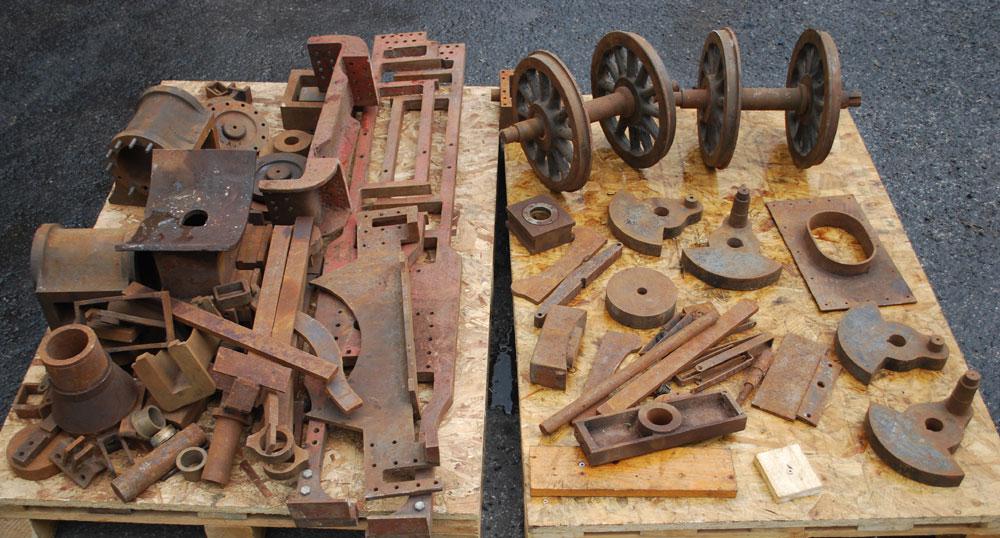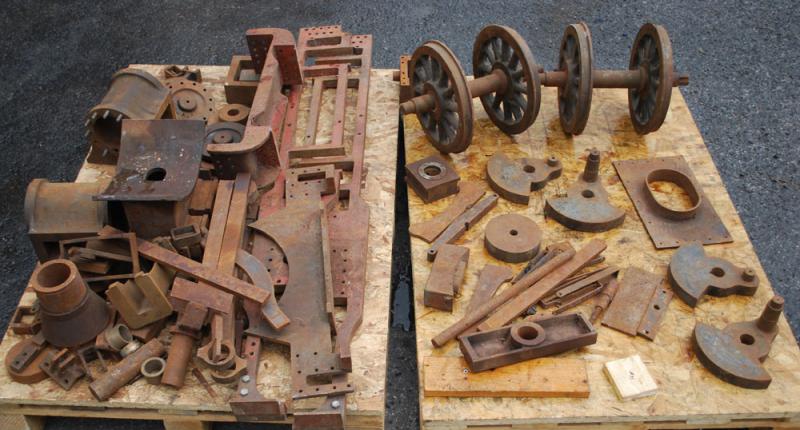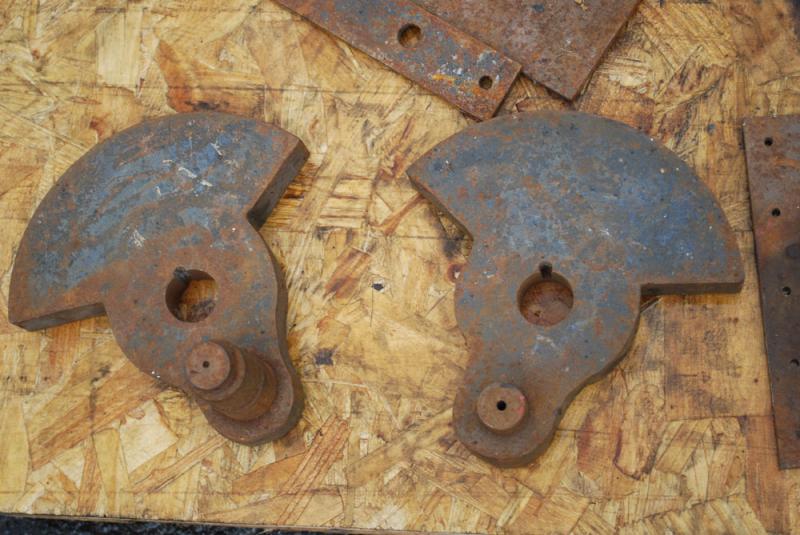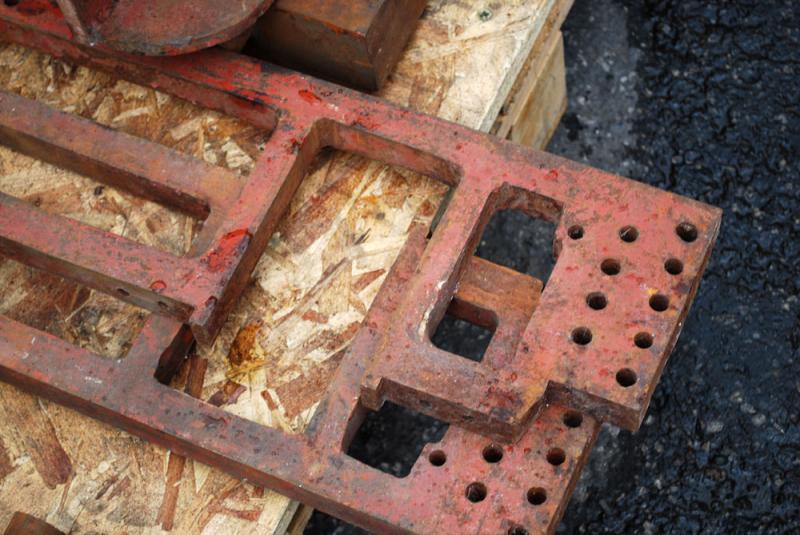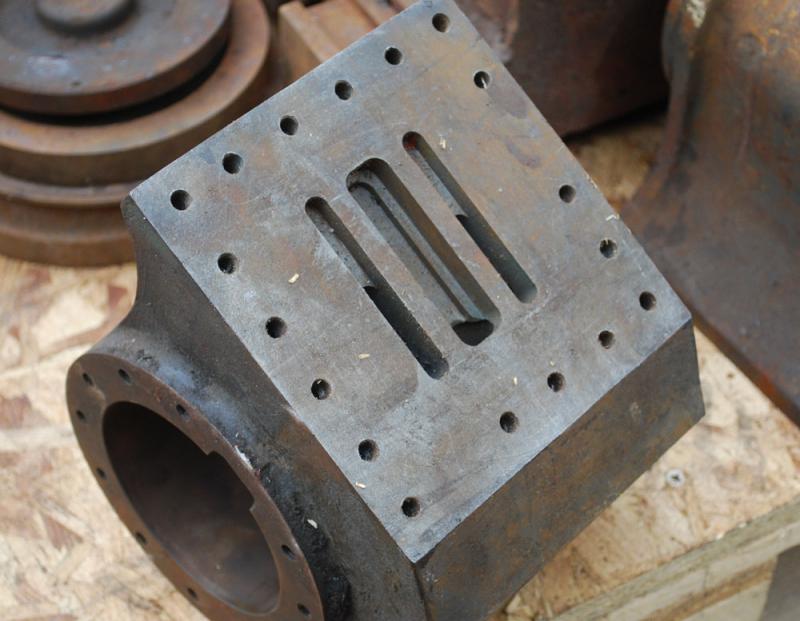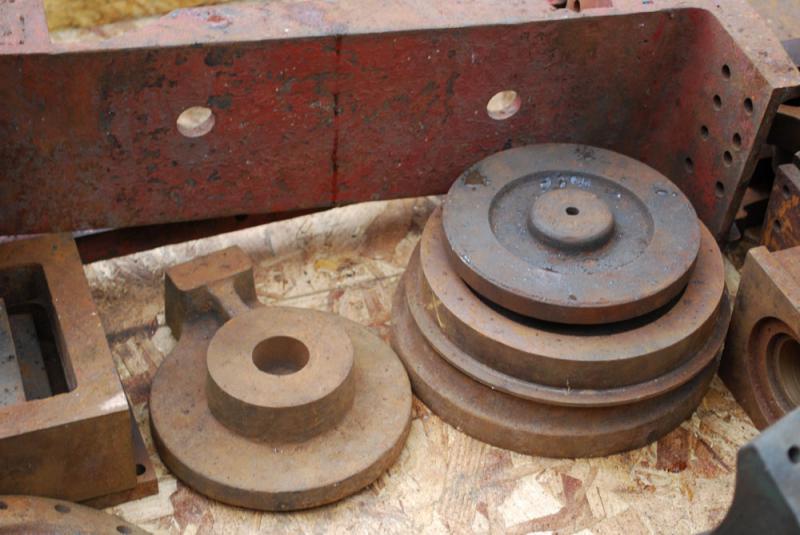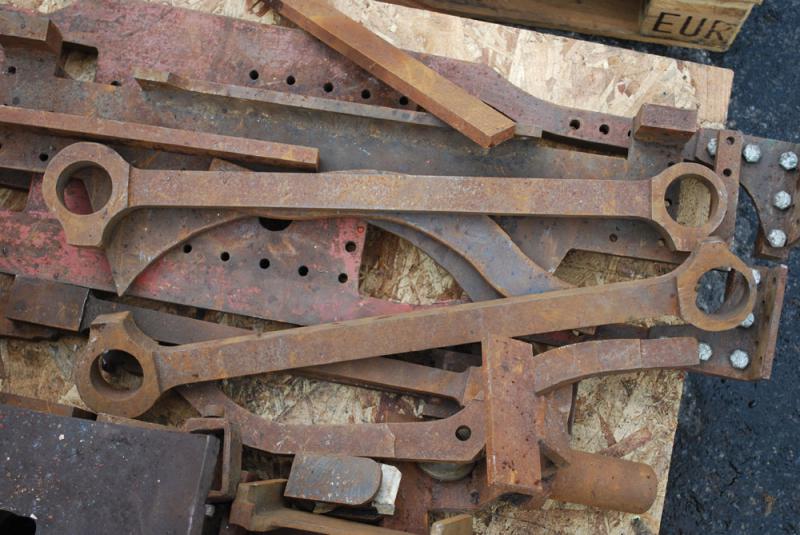Sold May 2011 Back to Archive
7 1/4 inch gauge Maxi 7 castings/frames - stock code 4308
Every now and again (about once a month in truth) something comes in that makes me think "I ought to put that away in the toy box to play with when I get a minute...". It's only ruthless self-discipline that prevents me needing a garden shed the size of an aircraft hangar.
This project falls into that category. It's the mighty Maxi 7 version of Don Young's "Lucky 7" design, originally for 3 1/2 inch gauge. For those who aren't familiar with the original design, it was based on the SR&RL Edaville #7 which survives in preservation, a large narrow gauge engine with outside frames.
In 3 1/2 inch gauge it's big - weighs over 300 pounds and is five feet long, I sold one last year, there are pictures and a video of it running in the archive. With typical ingenuity, Mr Young then produced a 7 1/4 inch gauge version by the simple expedient of moving the wheels outside the frames (or the frames inside the wheels if you prefer), losing the flycranks in the process. You then get the 7 1/4 inch gauge Lucky 7, which looks like the one that's in the workshop at the moment, pictured here. Now notice this is exactly the same as the 3 1/2 inch gauge engine in weight, dimensions - everything except the gauge.
At this point everybody got on happily making their chosen variant of Lucky 7 - 3 1/2 inch gauge for authenticity, 7 1/4 inch gauge for stability and utility on a ground level track and many of each were built. Of course, it was only a matter of time before some hero asked himself what would happen if you moved the frames back outside the 7 1/4 inch gauge version's wheels to make a full 7 1/4 inch gauge, 3 inch scale model- which then became the "Maxi 7".
And a "Maxi 7" is a beast.
It weighs a ton finished. It's over ten feet long. The permanent way people at your club will clutch their heads and tell you it can't possibly be run without ruining the track (which is nonsense, I used to run my K36 of similar weight on portable track in the garden at the last house). Small children will be frightened by it. Your wife most certainly won't understand why anybody would want to build something of such an impractical size...
So all in all, just my sort of engine - I like these a lot. I've only ever had one Maxi 7 come in, a well-advanced example which had been commercially-built to a high standard - I've wished ever since that I'd kept it to finish, there are some pictures of that one and the original engine in the archive here. As big as my K36 (whose arrival was the reason it was sold), it's a considerably higher engine, which makes for more of a Tinkerbell type driving position.
What we've got here (apart from a thousand hours of hard work, a large boiler to source and possible divorce proceedings) is something at a rather earlier stage. A couple of very heavy pallet fulls of bits, including machined wheels fitted to their axles, steel flycranks, a pair of well-machined cylinders, bored and with ports cut, profiled bar frames and a couple of hundredweight of other miscellanea including buffer beams, saddle, petticoat pipe, machined axleboxes etc etc. Enough to keep anybody busy for a while. Only thing I can see that's gone wrong to date is the coupling rods have been bored off centre with the outside profile, which is cosmetic rather than functional, although in this day and age, I would have a couple more water-jetted and fit ballraces.
Even as I sit here writing this (it's early morning, the sun is just coming up over the engine shed roof outside the office window showing a slightly unflattering view of one of the Tinkerbell's backsides) I can feel this one headed for the shed, something to do when I get some time to myself...
| gauge | 7 1/4 inch |



